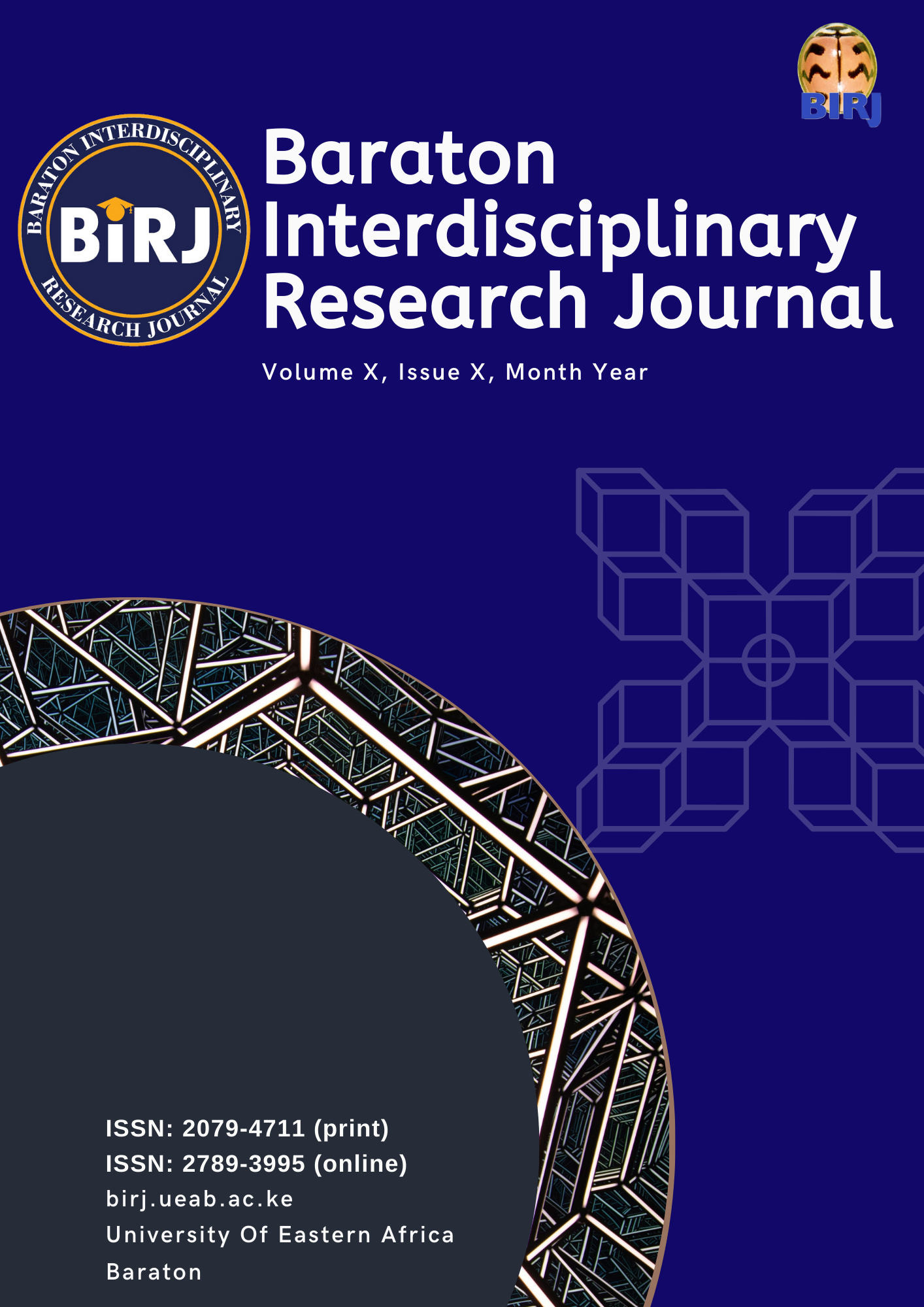IMPLEMENTATION AND CHALLENGES OF REVERSE INCLUSION AT KAPSABETVOCATIONAL TRAINING SCHOOL FOR THE DEAF IN NANDI COUNTY, KENYA
Keywords:
Inclusive education;, reverse inclusion, Special education, Deaf education, vocational training, Inter Group Contact Theory, Resilience TheoryAbstract
This case study investigated the implementation of reverse inclusion in a vocational program in
which the deaf were trained along with the hearing students. It was peculiar in the sense that it
was the first one of its kind in Kenya, perhaps one of the few in the entire region of Africa, and
more interestingly a case of hearing students enrolling at a school for the deaf. If it is already
culturally challenging to accommodate the deaf in mainstream public school system, a case of
the hearing venturing into a deaf school environment raised a lot of intriguing questions. The
study addressed the following questions (1) What was the process of implementation of reverse
inclusion like and what strategies were used? (2) What were the attitudes of the community
members, teachers and students towards deafness and reverse inclusion; (3) What are the views
of teachers and students about the effectiveness of the reverse inclusion program? and (4) What
challenges were experienced in the implementation of the reverse inclusion program? Resilience
and Inter Group Contact theories guided the study. Thirty- eight hearing, 22 deaf; and 7 teachers,
were purposively sampled for the study. Data was gathered using focus group discussions,
interviews, documents, and observation; and analyzed using the Logico-Inductive-Process. The
study revealed that the implementation was slow and occurred in stages. The strategies that were
used to facilitate the process included sensitization, cooperation, collaboration and negotiations
with multiple stake holders such as the sponsoring organization (Support Africa), the university
of Eastern Africa Baraton, the school for the deaf, community members and the ministry of
education. In spite of lurking stigmatization of deafness, the trial phase revealed progressive
attitudinal change towards deafness as more hearing students joined the program. Both teachers
and students felt that reverse inclusion was effective as there was cooperation between the deaf
and hearing, the students learnt different trades and upon graduation extended partnership in
businesses. The challenges of implementation included negative attitudes, delays in approval of
the program, lack of infrastructure, and barriers in communication. The researcher recommends
that for successful implementation of reverse inclusion there should be further sensitization of
the community on causes of deafness; multilevel collaboration of education stakeholders and
partners; introduction of sign language in basic education to promote inter group communication;
and integration of special education in teacher education curriculum. In addition, reverse
inclusion should be tried with other forms of disabilities in Kenya, for example the blind.
Published
License
License Terms
All articles published in the Baraton Interdisciplinary Research Journal (BIRJ) are licensed under a Creative Commons Attribution-NonCommercial-ShareAlike 4.0 International License (CC BY-NC-SA 4.0).
This license permits users to share (copy and redistribute) and adapt (remix, transform, build upon) the material for non-commercial purposes, provided that proper attribution is given to the original authors, a link to the license is included, and any derivative works are distributed under the same license.
Full license details: https://creativecommons.org/licenses/by-nc-sa/4.0/
Most read articles by the same author(s)
- Isaiah Ouma, Catherine Amimo, Millicent Ojwan’g, SUSTAINING THE FUTURE: RESOURCE MANAGEMENT IN 100% TRANSITION POLICY IMPLEMENTATION IN PUBLIC SECONDARY SCHOOLS IN SIAYA COUNTY, KENYA , Baraton Interdisciplinary Research Journal: Vol. 10 (2024): Special Issue
- Catherine Amimo, IMPLEMENTATION AND CHALLENGES OF REVERSE INCLUSION AT KAPSABET VOCATIONAL TRAINING SCHOOL FOR THE DEAF IN NANDI COUNTY, KENYA , Baraton Interdisciplinary Research Journal: Vol. 9 (2023): Special Issue
- Elizabeth Role, Catherine Amimo, UNIVERSITIES IN KENYA AT CROSSROADS WITH ACADEMIC CALENDAR: AN EVALUATION OF THE CHANGE FROM QUARTER TO SEMESTER AT A PRIVATE UNIVERSITY WITH IMPLICATIONS FOR COLLABORATION , Baraton Interdisciplinary Research Journal: Vol. 4 (2014): Special Issue
- Catherine Amimo, Elizabeth Role, GLOBALIZATION FACTORS AND IMPLICATIONS FOR CHANGE IN TEACHER EDUCATION CURRICULUM IN PRIVATE UNIVERSITIES IN KENYA , Baraton Interdisciplinary Research Journal: Vol. 5 (2015): Special Issue
- Catherine Amimo, Joseph Bosire, EMERGING ISSUES AND SUGGESTIONS IN THE MANAGEMENT OF TRANSNATIONAL EDUCATION , Baraton Interdisciplinary Research Journal: Vol. 5 (2015): Special Issue
- Catherine Amimo, Meshack Misoi, FACTORS INFLUENCING LECTURERS AND STUDENTS’ UTILIZATIONOF E-LEARNING RESOURCES AT THE UNIVERSITY OF EASTERN AFRICABARATON, KENYA: TOWARDS IMPROVEMENT OF THE INNOVATION , Baraton Interdisciplinary Research Journal: Vol. 11 No. 1 (2025): Issue 1

